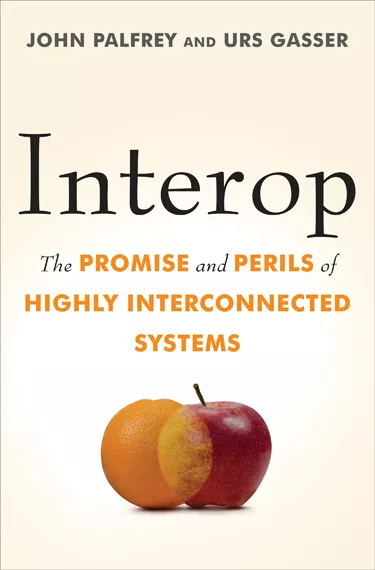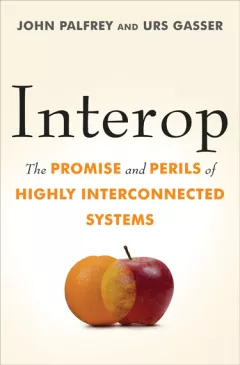
Recap & Video from the Launch of "Interop: The Promise and Perils of Highly Interconnected Systems"
Last Wednesday we were proud to host the launch of John Palfrey and Urs Gasser's latest publication, Interop: The Promise and Perils of Highly Interconnected Systems, along with the Harvard Law School Library and the Harvard Book Store. Video of the talk has been posted online, so if you were unable to attend in-person, we invite you to watch John and Urs' presentation, which focused on their theory of interoperability and offered real-world case studies and examples:
Additionally, Interop was reviewed in Nature by Nigel Shadbolt, where he offered a brief synopsis and critique of the book:
Digitization eases many aspects of life, but it has introduced a slew of frustrations. Most of us have struggled to display a presentation on a projector or play digital content across a range of devices — both aspects of the challenge that John Palfrey and Urs Gasser lay out in Interop. The interoperability of devices and systems is an ever more pressing issue in an era of increasing digital complexity.
The authors, both Internet law experts, trawl through case studies to outline why interoperability is so important, how it arises and the benefits and issues that flow from it.
Members of the Berkman community, including David Weinberger, Nathan Matias, and Perry Hewitt liveblogged and reflected on yesterday's launch.
JP says the topic of interop seems on the face of it like it should be "very geeky and very dull." He says the book started out fairly confined, about the effect of interop on innovation. But as they worked on it, it got broader. E.g., the Facebook IPO has been spun about the stock price's ups and downs. But from an interop perspective, the story is about why FB was worth $100B or more when its revenues don't indicate any such thing. It's because FB's interop in our lives make it hard to extract. But from this also come problems, which is why the subtitle of the book Interop talks about its peril.
Achieving Interop can take a long time. It requires many actors to negotiate with each other while handling legacy systems and navigating the complexity of highly coordinated systems. Happily, there are many paths to interoperability. The challenge often lies in choosing the right set of tools in the design challenge of interoperability. In the book, Gasser and Palfrey map out a broad range of instruments on a quadrant: unilateral approaches, collaborative approaches, non-regularity (private action) approaches, and regulatory approaches by state actors. As an example of the ideas expressed in this detailed map, he points out that Governments aren’t usually that good at defining standards, but they can be very effective at convening industry.
Overall, Palfrey and Gasser find that the benefits outweigh the risks, and paint a picture of smarter cities and reduced redundancy (surely many people in the U.S. have a drawer full of obsolete mobile phone chargers). Before we realize the full value, I’d wager that there will be more than a few examples of interoperability information flow being used for nefarious purposes — particularly since so many enterprise IT security protocols are based on practices over a decade old.
Pictures from the evening can be found on the Berkman Center's flickr page.
